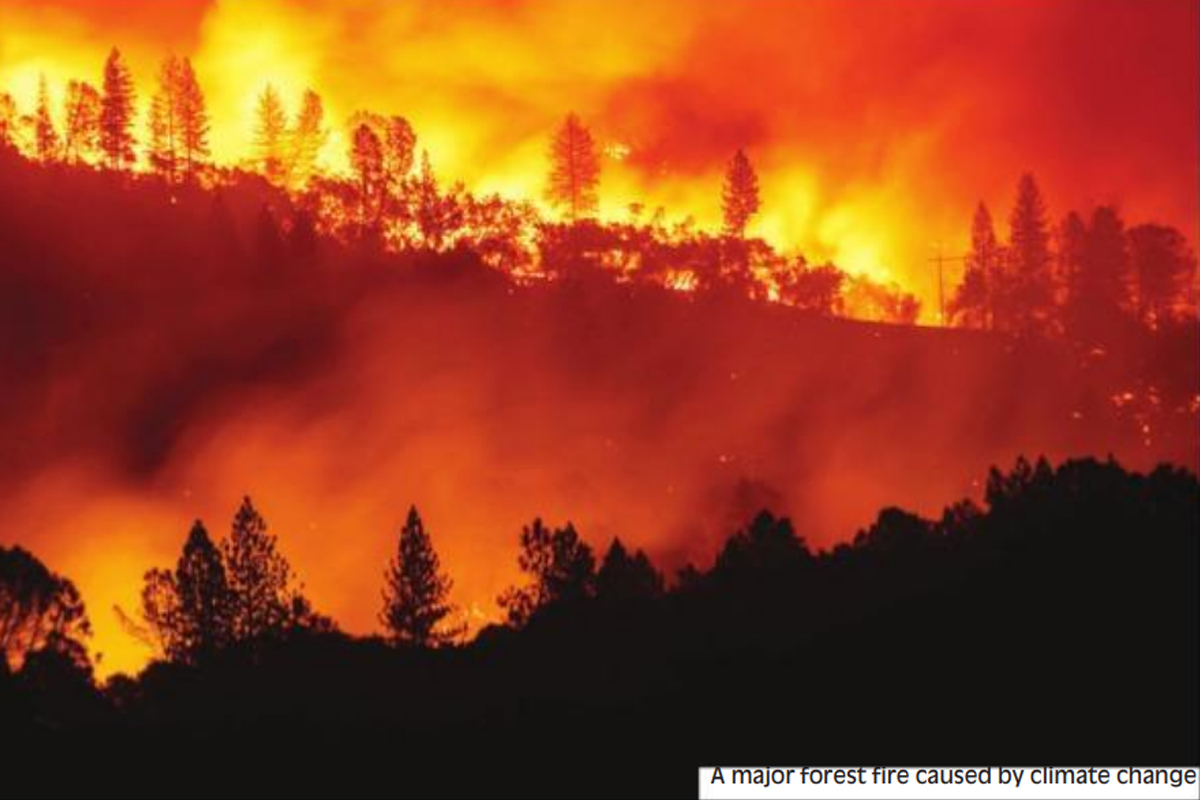The opening chapter of Silent Spring, published 60 years ago, paints a devastating picture of “a town in the heart of America where all life seemed to live in harmony with its surroundings”. Its abundant flora and fauna attracted visitors from far and wide. Birds sang, bees buzzed, wildflowers bloomed, farms flourished, and trout proliferated in the clear, cool streams. “Then a strange blight crept over the area and everything began to change. Some evil spell had settled on the community.” New maladies appeared, “even among children, who would be stricken while at play and die within a few hours”. The birds disappeared — “It was a spring without voices” — and farm animals withered like the flowers and trees and crops, just as the streams were bereft of visible life.
A few weeks earlier, “a white, granular powder … had fallen like snow upon the roofs and lawns, the fields and streams”. The author, Rachel Carson, then offers an introductory explanation: “No witchcraft, no enemy action had silenced the rebirth of new life in this stricken world. The people had done it themselves.” She concedes that she knows of “no community that has experienced all the misfortunes I describe”, but adds: “Yet every one of these disasters has actually happened somewhere…” Carson’s primary target is the consequences of World War II alchemy — the ingredients of chemical warfare that were adapted to peacetime usage, sometimes with honourable intent but often overlooking the potential collateral damage. She directed much of her wrath against DDT, which had proved extremely effective against malaria and whose inventor’s efforts had won him the Nobel Prize.

Its potential as a human carcinogen, however, had yet to be investigated, let alone its effects on other species. I still remember well the smell of DDT. In powder form, it was liberally sprinkled around the family home as an insecticide — mostly, but not exclusively, outdoors. The risks never registered, even after it was banned in the US a decade after Carson’s eloquent diatribe. I first heard about Carson and her best-known book some 35 years after its publication in a long-distance interview with the American musician and activist Pete Seeger, in the context of his motivation for a remarkable 1966 LP titled God Bless the Grass — perhaps the first album by a popular artist to reflect largely on environmental concerns. Seeger went on to spearhead a successful campaign to clean up the Hudson River. It was another decade or so before I got hold of a copy of Silent Spring, and found it a riveting read — not just as a historical text but as a contemporary manifesto. Not surprisingly, when the use of DDT was banned in the US, exports of the substance weren’t affected. Sixty years after Carson exposed its carcinogenic qualities, it remains a potent risk.
Perhaps inevitably, there was a backlash against Carson even before her book was published, because it had been excerpted in The New Yorker a few months earlier. The highly lucrative chemical industry was vociferous, and the various denunciations included the unfounded claim that she was a secret communist. It’s telling that this is frequently the standard smear in America against those who elevate human existence above corporate imperatives. Silent Spring illustrates in poetic language how the overuse of chemical compounds in herbicides, insecticides and the like poses a threat to all life. Indiscriminate aerial spraying across fields, farms and human abodes was a particular bête noire.
Contrary to accusations that she was condemning millions to death by malaria and other such diseases, Carson did not advocate a ban on the use of chemicals but merely more judicious us–a—–ge, in far smal-ler con-ce-ntrati-ons, and — where possible — pest reduction through biological alternatives. Despite her valid argument that chemicals intended for curbing a particular form of pestilence invariably affected a wide range of species and inevitably leached into the human food chain — including baby foods — a US study earlier this year found traces of glyphosate, a chemical linked to cancer, in 80 per cent of samples taken from Americans of all ages.
That is the key ingredient in herbicides used across the globe, including the common Roundup brand. Understandably, concerns about the palpable climate emergency nowadays cloud human consciousness. It’s worth remembering two things, though. First, that the pattern of resistance to meaningfully combating climate change has plenty of precedents, including the vociferous opposition to doing very much about the poisoning of all forms of life of earth through chemical contamination. And, secondly, that even if by some miracle humankind can conjure up the will to effectively resist the ongoing depredations associated with fossil fuels and the powerful corporations and states intent upon prolonging their deleterious usage, other arduous — and as yet unconquered — challenges lie in wait.












